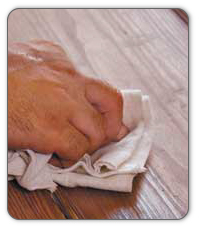If you're suffering from a repetitive strain injury you've probably had to face the frustration of managing your pain for weeks, months or even years. Sometimes even when you think it's been dealt with (and healed) you'll wind up with the same pain months or years later.

When you have a repetitive strain injury you'll always be at risk of suffering from the same injury over and over again. This is because any injury caused by repetitive activity or placement of your fingers, hands, wrists, elbows, arms, shoulders, back, hips, legs or feet is based on a long-term pattern of the way you move. This activity is triggered by movement that's on-going in your life - like a 9 to 5 desk job with extensive computer work, picking and packing parcels for 8 to 12 hours per day, or even operating heavy duty (vibrating) machinery regularly.
Surgery is also another thing to think about, but having a surgical procedure will end up forcing you to choose 1 of those options in the end. Even after the surgery is done, you'll be returning to your job or activities that caused the injury in the first place.
Without proper care and attention you'll wind up with the same injury all over again. It may take months or years but it'll still happen. And that's because you haven't made the choice to stop the cycle of repetitive use OR adjust your activities and treatment.
If you've gotten this injury from your job you're probably thinking to yourself:
If this is a condition from an activity you love (like playing music, gardening, designing, painting, etc.) then you're probably asking yourself:
You don't have to make these sacrifices to live a full, happy and healthy life. If you choose not to give these things up then you're automatically deciding to go for option 2. This means continuously treating your condition with conservative treatment methods and adjusting your activities.
Even though this sounds complicated it's actually surprisingly easy. Thousands of people are already treating themselves in ways to avoid surgery or live off of pain medications. Why should a repetitive strain injury be any different?
This is as simple as making sure that your have proper blood flow circulation while healing your injury. You can even maintain good health in that area with continued TShellz Wrap®) treatments. If you're suffering from on-going pain, inflammation or swelling in the area, then consistent treatment with cold compression is a very effective way to manage those symptoms. Adjusting your activity will only ever really involve taking a good look at your posture, workspace and technique.
Fortunately for you there are tools available to help you do all of these things!
Using Circulation Boost and cold compression to treat repetitive strain injuries is nothing new. Professional athletes have had access to state of the art treatments for years that allow them to heal more quickly and completely than you or I. This is why athletes that have repetitive strain injuries can often get back in the game in a matter of weeks while you could suffer for months or even years.
If you want to be proactive about properly dealing with your repetitive strain injury, speak to your doctor about adding AidYourTendon's system utilizing TShellz Wraps® and cold to round out your treatment.
Repetitive Stress, also referred to as Repetitive Strain Injury, is an injury or multiple injuries to the nervous system and musculoskeletal structure caused by repetitive use of one or more muscles and joints in the body. It happens when you perform the same action over and over again.

It is a general term that refers to many conditions including (but not limited to) Carpal Tunnel Syndrome, de Quervain's Disease, Writer's Cramp, Vibration Induced White Finger, Radial Tunnel Syndrome, bursitis, tendinitis (tendonitis), tenosynovitis, and trigger finger.
A repetitive stress injury usually occurs after the age of 30 and is a result of wear and tear from the overuse of muscles, tendons, joints and ligaments as you age. These repetitive motion injuries can occur in the shoulders, back, neck, hands, hips, wrists, elbows and lower limbs.
Repetitive strain injury (RSI) is very common and is referred to by other names including: repetitive stress injury, repetitive motion injury, repetitive motion disorder (RMD), cumulative trauma disorder (CT), occupational overuse syndrome, overuse syndrome, regional musculoskeletal disorder, and work related upper limb disorder (WRULD, ULD).
All forms of repetitive stress injuries are painful and uncomfortable with damage occurring in your muscles, tendons, nerves and/or other soft tissues.
You may experience some of these symptoms depending on the area of your body that's affected by a repetitive strain injury (RSI):
Your symptoms may tend to develop slowly over time and only occur when you're doing the repetitive task. These symptoms may also seem to get better or decrease with rest. The pain can range from mild to severe, as time goes on you may notice the pain is present all the time and gets worse by doing the repetitive task or activity that's caused your injury.

It's possible for some people to develop repetitive strain while others won't even when doing the same tasks for similar periods of time. The reason is not clear as to why you can develop this condition. What is known is that daily repetitive movements (typically longer than 2 hours per day) involving the work in a factory (soldering or assembling pieces), office (typing or clicking a mouse), or warehouse (lifting or twisting) can lead to RSI.
Some other causes of this condition include:

If a Repetitive Stress is detected early, there is a greater chance that the condition can be reversed and symptoms can be eased.
If you have been diagnosed with RSI, it is recommended that you rest the injured body part from any aggravating factors, especially the task(s) that caused the condition. Your physician will probably recommend conservative treatments such as painkillers/anti-inflammatories, physio, rest and icing of the injury. In cases where conservative treatments are recommended, talk with your physician or PT about incorporating TShellz Wrap® treatments into your at-home treatment regimen. Read more about treatments here.
Product Advisors are available 9:00 am to 5:00 pm Eastern Standard Time Monday to Friday.
I want to learn more about Post-Surgery Recovery
I want to learn more about TShellz Wrap® Circulatory Boost
I want to learn more about Ice & Heat: Which Is Better For Treatment?
I want to learn more about Tendonitis Treatments
I want to learn more about Tendonitis Surgery
During your recovery, you will probably have to modify and/or eliminate any activities that cause pain or discomfort at the location of your soft tissue injury until the pain and inflammation settle. The more diligent you are with your treatment and rehabilitation, the faster you will see successful results!
Please be aware that this information is neither intended nor implied to be a substitute for professional medical advice. CALL YOUR HEALTHCARE PROVIDER IMMEDIATELY IF YOU THINK YOU MAY HAVE A MEDICAL EMERGENCY. Always seek the advice of your physician or other qualified health provider before using any of our outstanding products to make sure they are right for you and your condition or if you have any questions regarding a medical condition. Always see your doctor for a proper diagnosis as there are often many injuries and conditions (some very serious) that could be the cause of your pain.
© 2025 In.Genu Design Group, Inc. Contact Us